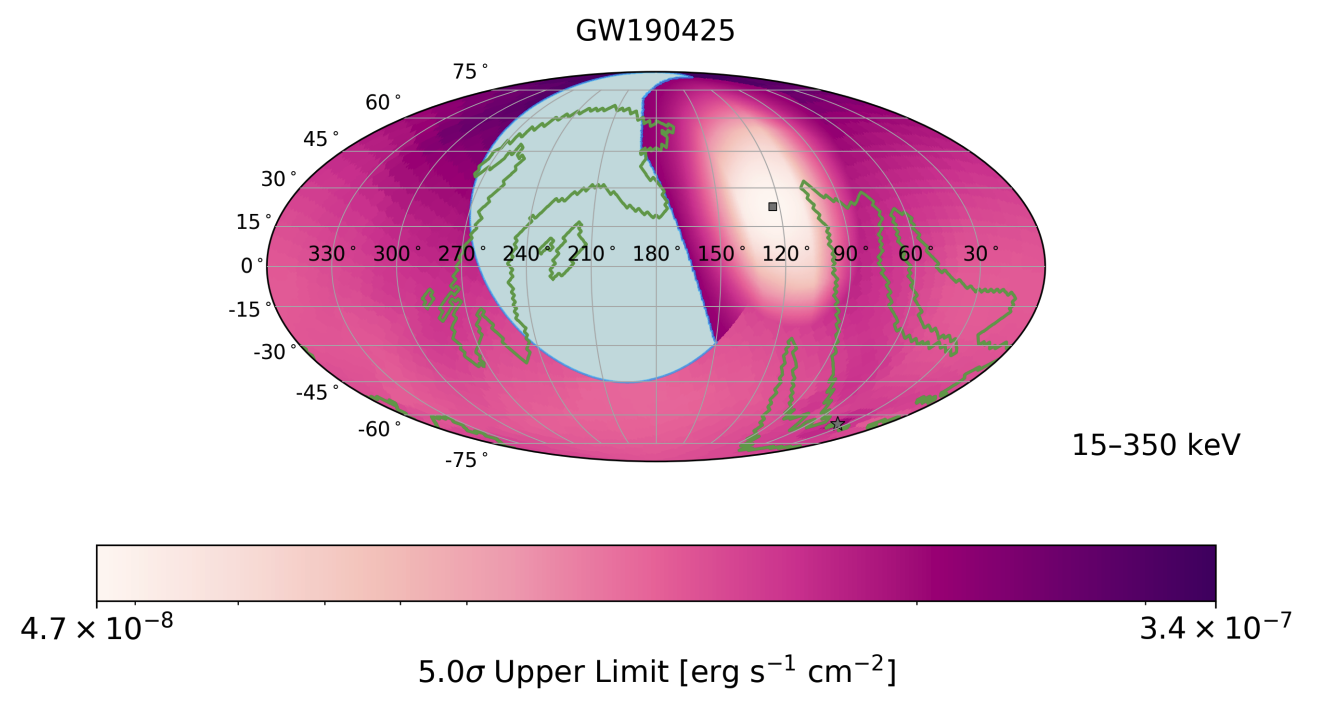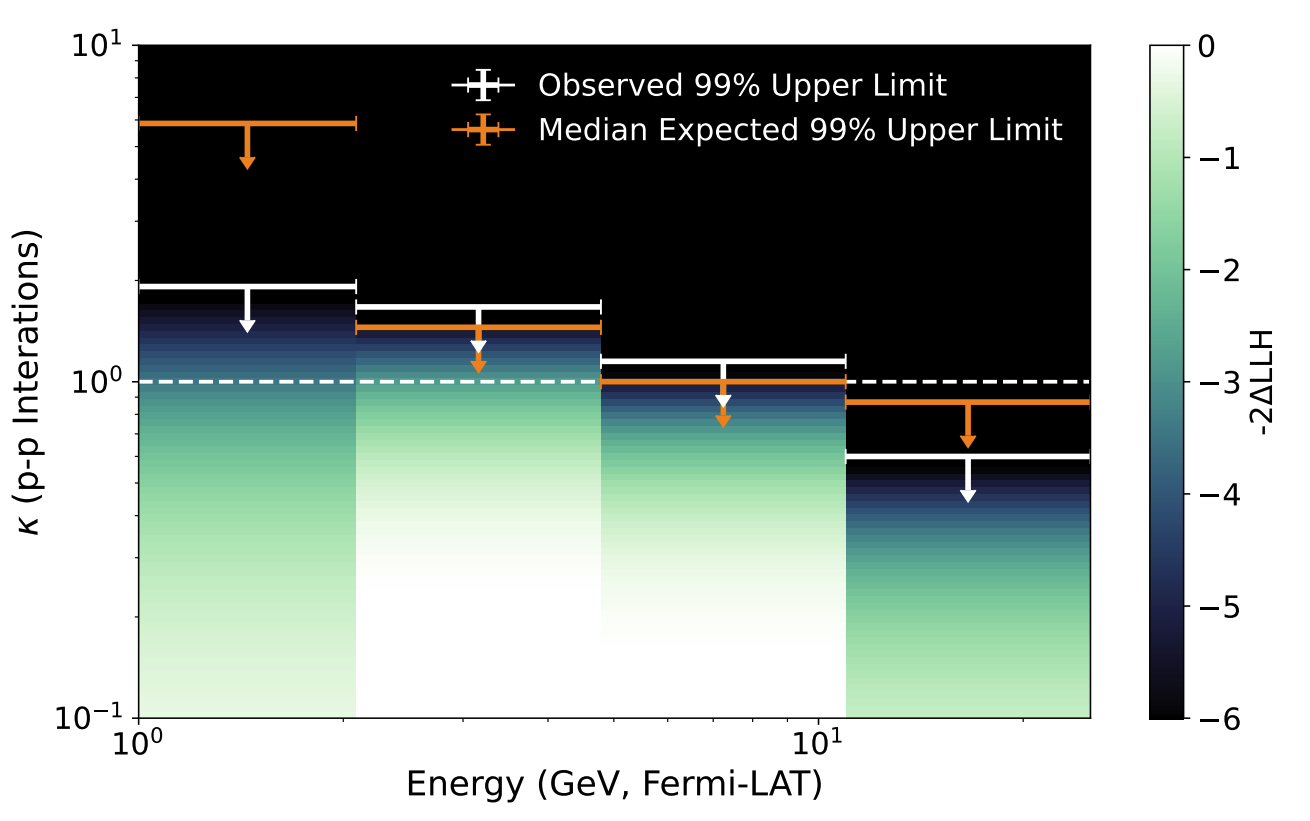
Looking for the γ-Ray Cascades of the KM3-230213A Neutrino Source
Milena Crnogorčević, Carlos Blanco, Tim Linden
The detection of a possible extremely high-energy neutrino by KM3NeT could transform our understanding of extreme cosmic accelerators - but its absence in IceCube data suggests a rare, directional and potentially transient source. In this study, we model the electromagnetic γ-ray cascades that would be expected from such a source if it were hadronic in origin, using the γ-Cascade code. We then perform a deep Fermi-LAT follow-up, scanning spatially and temporally for GeV γ-ray emission. While no significant counterpart is found, we set the first constraints on the redshift–magnetic field strength plane for such a source, and identify a new hard-spectrum γ-ray source that may hint at a past transient event. Our results push the frontier of multimessenger astrophysics by using non-detections to probe the extragalactic magnetic field and test neutrino source models.

Catching the next wave: gamma-ray counterparts to gravitational waves
Corinne Fletcher et al. on behalf of the Fermi-GBM Team
Milena Crnogorčević et al. for Swift-BAT
and the LIGO/Virgo/ KAGRA Collaboration
The detection of gravitational waves (GWs) from a merger of two neutron stars (GW170817) and their short gamma-ray burst counterpart (GRB 170817A) introduced new ways to explore a number of long-standing questions in astronomy (e.g., the origins of heavy elements or the nature of the environments of particle acceleration in the Universe.) No other counterpart detection to a gravitational wave event has been confirmed to date. We present an offline, follow-up search for excess emission of gamma-rays with the Fermi Gamma-ray Burst Monitor (Fermi-GBM) and Swift- Burst Alert Telescope (Swift--BAT), in spatial and temporal correspondence to gravitational-wave events reported by the LIGO/Virgo/Kagra (LVK) Collaboration in their third observing run (O3).

Cross-correlating unresolved gamma rays with neutrinos
Michela Negro, Milena Crnogorčević, Eric Burns, Eric Charles, Lea Marcotulli, Regina Caputo
With the recent coincident detections of electromagnetic radiation and gravitational waves (GW 170817) or neutrinos (TXS 0506+056), the new era of multimessenger astrophysics has begun. Particularly interesting are the searches for spatial coincidence between the high-energy astrophysical neutrinos detected by the IceCube (IC) Observatory and gamma-ray photons detected by Fermi. So far, only sources resolved with the Fermi's Large Area Telescope (LAT) have been considered in correlation with IC neutrinos; in turn neglecting any emission from sources too faint to be resolved by the current gamma-ray instruments. Here, we present the first consideration of such unresolved emission, both using simulations and real observations. Although we report no significant correlation in the current all-sky neutrino and gamma-ray observed maps, we provide the first upper limits on the neutrino flux produced by the unresolved blazar population. We also discuss the implications of our results for the current theoretical models of neutrino production in blazars.